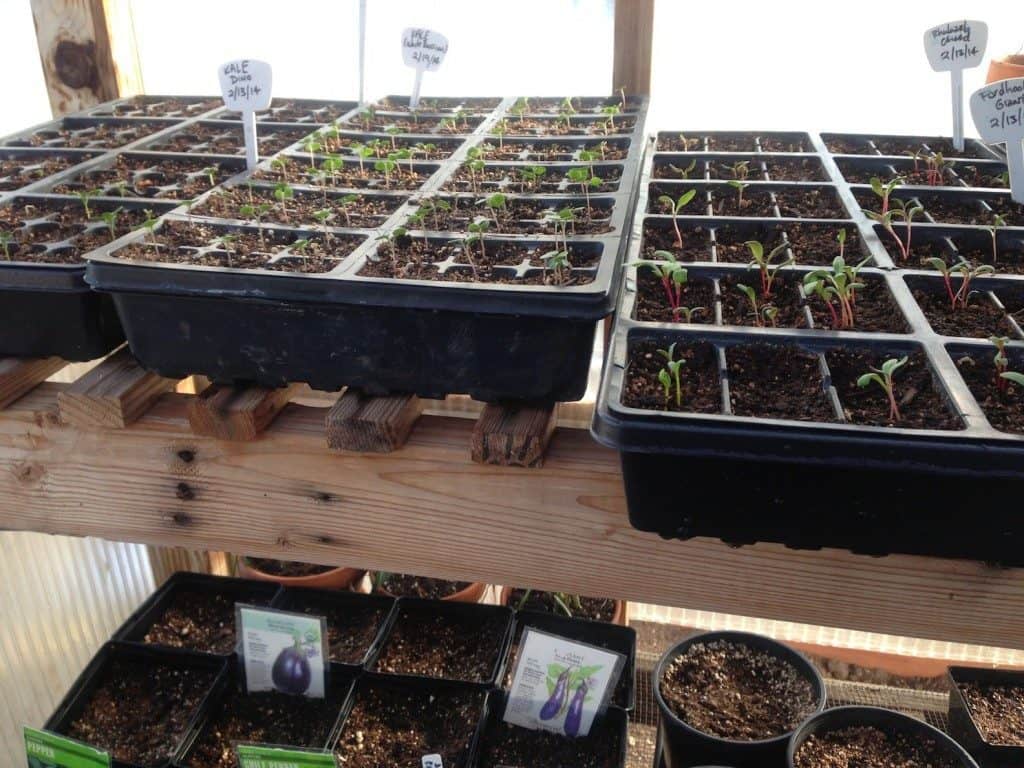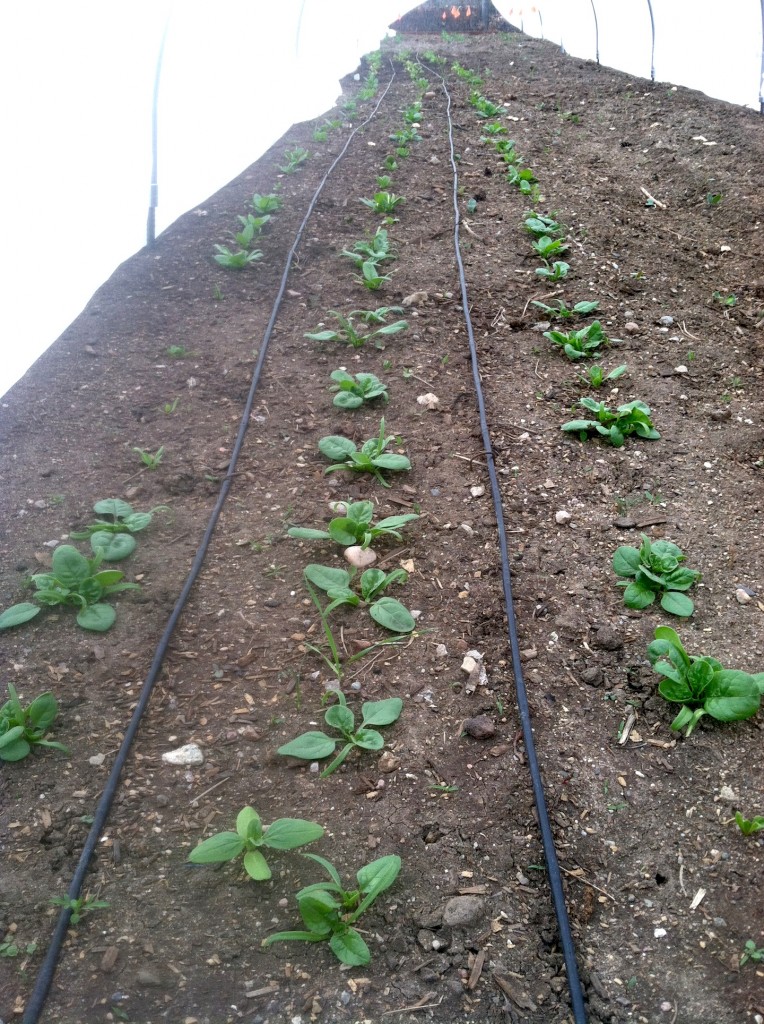Many (all right, almost all) of the challenges of farming are due to the unpredictable forces of nature. Thanks to resources like the Farmers’ Almanac, biodynamic planting calendars, and weather forecasting, we can plan the best care for our crops. With every season you learn new and better ways to act with a little caution and a lot of forethought. With 70-degree days weeks prior to the start of spring, we were already sunburned from our eager bodies and spirits greeting the season head on.
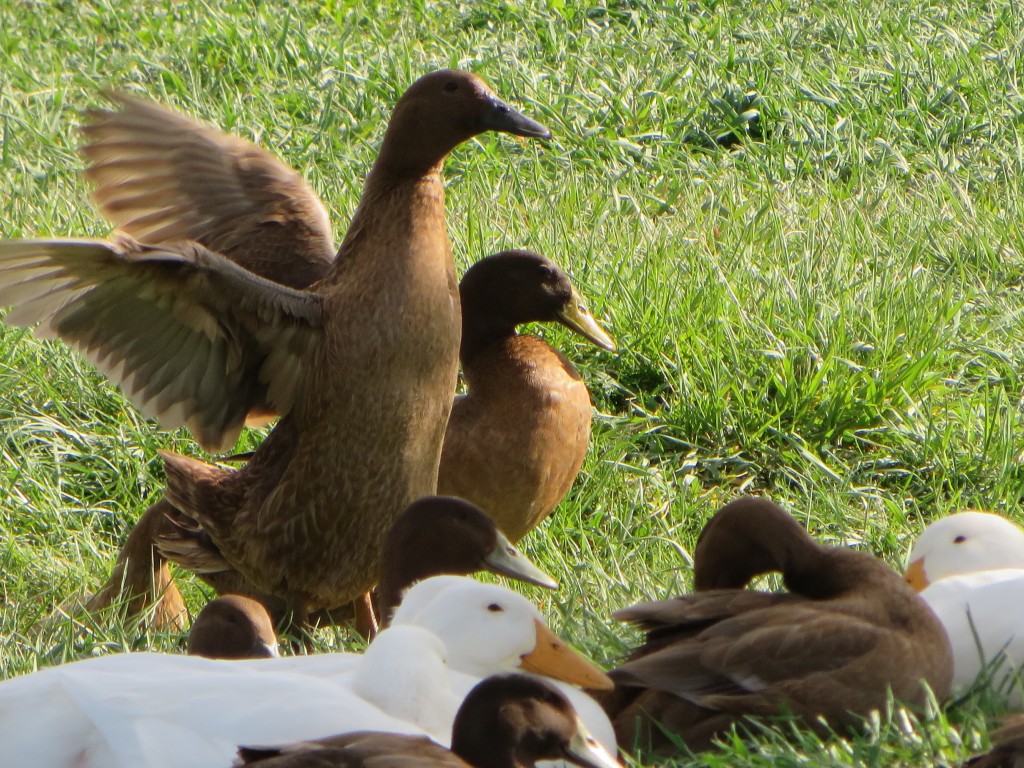
However, when we were tempted to transplant the tomatoes, peppers, and eggplants, memories of last year’s surprise snowstorm at the end of May reeled us back in. I was glad we waited when the weather again took a turn, plummeting to 30-degree days, a good hailstorm, and 6 to 8 inches of snow! As I write this, it’s May 12, which is 8 days past our region’s “last spring frost date.” Yet a couple inches of heavy, wet snow still cover the ground.
Don’t get me wrong, I’m thankful for the moisture. But on the day we’d set aside to plant our corn and beans (based on the biodynamic calendar), the soil will be too wet to work. You don’t want to tread extensively across wet soil because it will compact, pushing out healthy oxygen—and thus, we needed more patience and forethought.
So, what did we do to prepare for this winter storm? And what’s growing in the garden, even in the midst of spring’s fluctuating hot and cold temperatures?
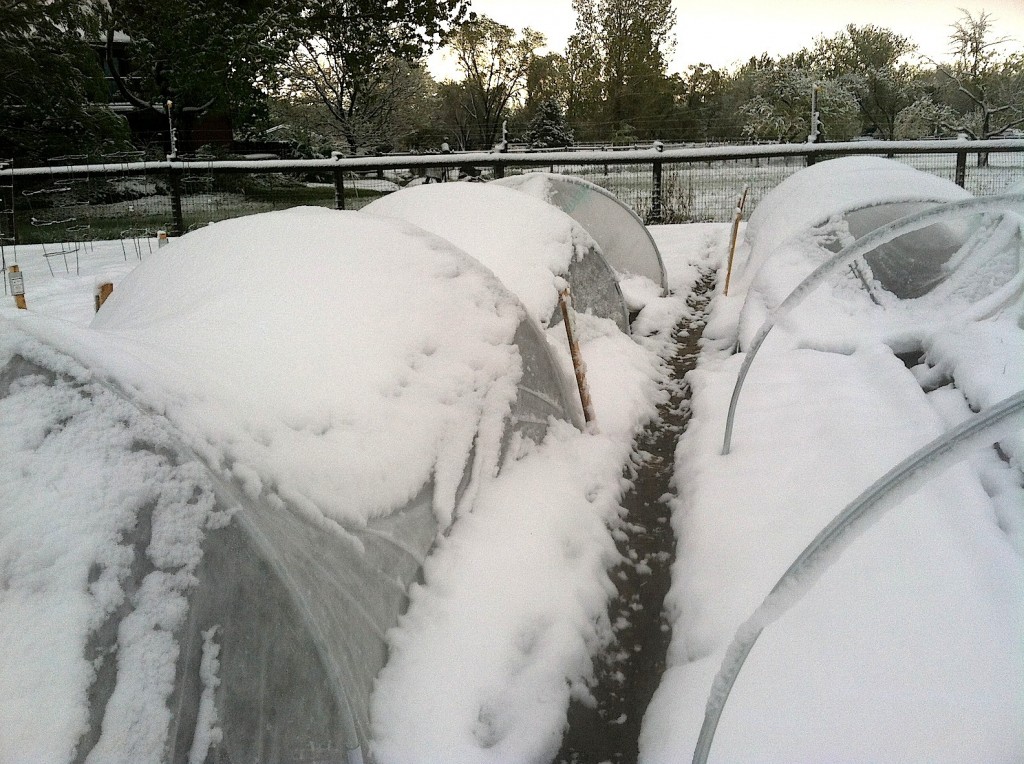
This time of year we have carrots, radishes, and beets that were all seeded directly in early April. Leeks were transplanted in the middle of April when they were 6 inches tall. Since these are root crops, in the event of a snowstorm they don’t need covering—as long as the seeds have germinated. The primary crop of these plants is below ground, where the snow actually insulates the soil, protecting them from frost damage.
We also direct-seeded peas and spinach in early April. Both of these crops are well established at this point—we harvested our first spinach leaves for salad last week. To protect the peas and spinach from the snow, we hooped white Agribron and Covertan fabric over them. This fabric is thin and protects against frost, sun, and pests. In this case, peas and spinach are hearty and survive well with just one thin layer of fabric. No fuss with heavy plastics.
We transplanted kale, mustard greens, Swiss chard, broccoli, and kohlrabi in April–May, when they were at least 3 inches tall. Like the spinach and peas, these crops only require fabric for protection. Kale, mustard greens, and Swiss chard are hearty and survive with one layer of fabric. In fact, kale thrives in freezing temperatures by producing an anti-freeze that actually brings out sweeter flavor. The broccoli and kohlrabi are a little less hearty and were recently transplanted, leaving them more delicate with less-developed root systems, so we hooped these with two layers of fabric.
We transplanted a variety of lettuces in mid-April. These plants are well established (and smaller leaves are harvestable). But with more delicate leaves than the other greens, we covered the hoop with two layers of fabric and placed a third layer of fabric directly on top of the lettuce rows, staking it into the ground. The fabric is lightweight enough that it doesn’t damage the lettuces while holding in extra heat.
The results? All crops survived the nasty snowstorm. A few things to note: we chose not to cover the root crops out of priority for our other crops. But if you have the time and materials, it doesn’t hurt to cover the root crops. Ours will be stunted and develop slightly slower for a few weeks, but won’t be damaged entirely. The fabric is great for frost protection, and we’ll leave our rows covered most of the year. However, in some spots the fabric didn’t withstand the weight of the wet snow. Luckily, it only tore above the kale, which could handle the extra cold. But next time—though we’re crossing our fingers there won’t be a next time—we’ll sweep the snow off the tops of the hoops a couple times so the weight doesn’t accumulate.
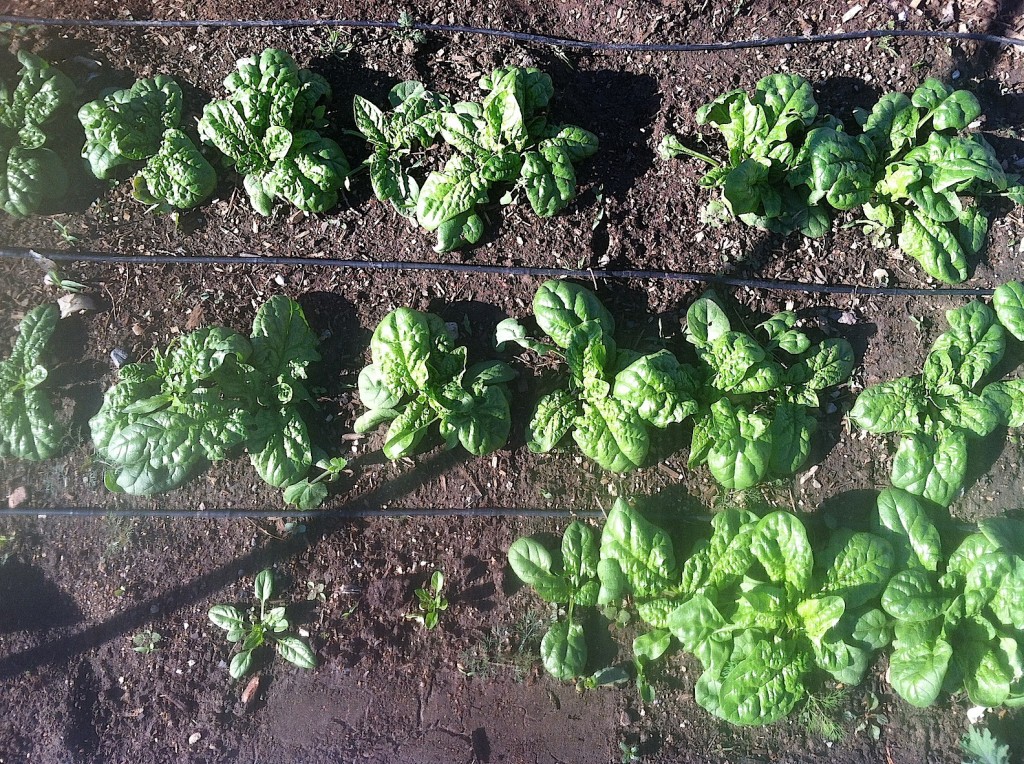
The forecast is warming and the sun is out, so later this week it will be back to the field to uncover our rows and pick up where we left off with direct-seeding corn and beans.
What’s growing in your garden, and how did you cope with the snow?


